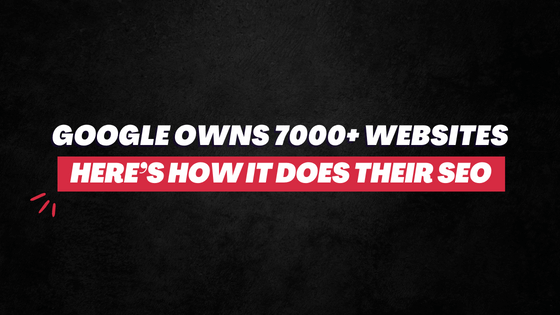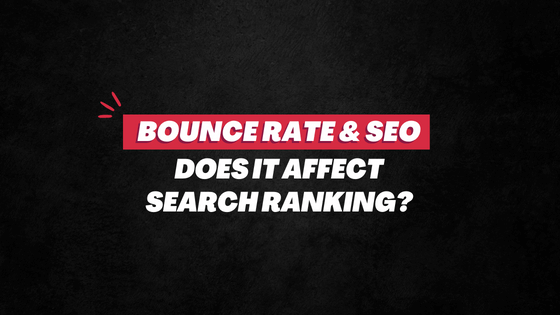Some of these are outdated, others are the “talk of the town”.
Some are black-hat SEO techniques, others are white-prince.
The purpose of this post isn’t to tell you how to build links, what are the off-page SEO best practices or how should you go about in this direction.
I just wanted to list all the possible – or at least the popular – off-page SEO activities, along with related resources, under a single roof with very little personal opinion.
So, if you’re going to use any of these tactics, stay cautious and do it at your own risk.
That being said, let’s dive in.
Here are 32 off-page SEO techniques 2023:
1. Guest blogging
Guest blogging is possibly one of the best ways to get backlinks in 2023.
You find relevant websites in your niche that accept guest posts. And then you write for them.
This “find” part is quite simple. Just Google a few basic phrases creatively.
For instance, if you’re in fitness, search for something like “Fitness + Contribute” OR “Fitness + Write for us”.
You will have a list of websites where you can guest blog.
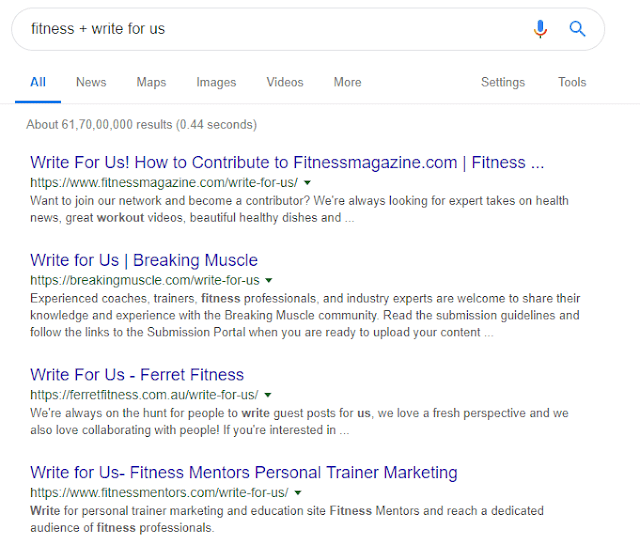
The majority of them would allow you to include one backlink, in the post, to your website. Even if not, they would then, at least, allow you to include your URL in the author box.
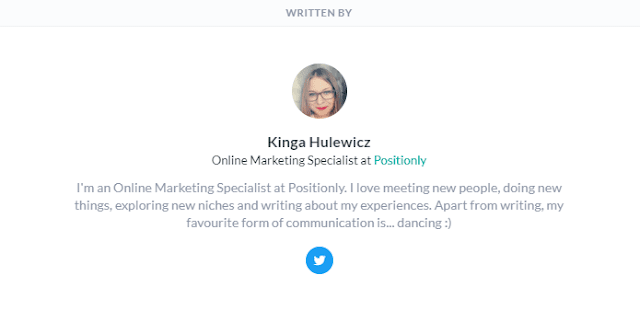
Even if the backlink is ‘noFollow’, it will still be helpful to deliver better readers’ experience and drive decent brand traction.
Also Read: Should You Accept Guest Posts On Your Blog?
2. Link Baiting

The idea is very simple here. You create such an outstanding piece of content that other people can’t help but link to it or share it.
This is, of course, easier said than done.
With your competitors shelling out more content than you – and they are producing much superior content – it’s difficult to create in-depth, superstar-like articles or posts every other day.
Not only would you have to be a better blogger/writer, but you would also need to be an expert in your topic; or, at least, you would have to do some serious research work.
The post must be engaging, targeted, and very valuable in nature.
Expert Roundup posts or articles that include the latest statistics in one place—these do very well in terms of getting backlinks and social media shares.

Of course, the ‘ultimate guides’ and ‘complete lists’, too, hold great value. And they usually impress many to the extent of linking and sharing the posts.
3. Social bookmarking
You bookmark URLs in your browser. This one is similar, only you’re bookmarking URLs on dedicated websites that everyone can see.

There are a handful of well-renowned social bookmarking sites that are known to maintain very good quality.
Delicious (or del.icio.us) was possibly one of the biggest names in this niche. But back in 2017, rival Pinboard acquired it and shut it down.
Reddit is now the most popular option. Mix (previously StumbleUpon) is another popular name that many go gaga over for the kind of traffic it helps them generate.
Other good social bookmarking sites include Digg, Dribble, Scoop.it, Diigo, and Pinterest.
Each of these has different policies and rules about posting. And to prevent spams, they are very strict.
But the usual process includes creating an account, completing the profile, joining the right groups, and then pushing high-quality content using the right tags.
(Note: Often social media platforms are referred to as bookmarking sites.)
Search Engine Journal has a nice list of 50+ social bookmarking sites. Check it out here.
4. Directory submission
In 2023, this could be one of the most frown-upon off-page SEO activities.

The “experts” believe this doesn’t work. But that doesn’t stop many, including the SEO agencies, to try their hand at this.
The name makes it very evident.
There are many online directories. Some are generic, others are niche-centric. Some are paid, others are free. Also, some may require you to offer a reciprocal link (a link for a link).
You submit your URLs in these directories to get backlinks and brand exposure.
Some of the popular directory submission sites include Blogarama, Free PR Web Directory, So Much, and Linkpedia.
Here’s a nice list of free blog directories by Harsh Agarwal of Shout Me Loud.
Recommended Read: Is directory submission still effective for SEO
5. Classified Ads
There are websites that let you advertise your products/services.

Classified submission still remains a popular off-page SEO tactic for many.
You advertise your offerings through engaging, short-form, regularly published content. In return, you get backlinks, as well as brand exposure.
Again, there are many classified websites out there. Craigslist is the most renowned name. Gumtree, Sulekha, Facebook Marketplace, Olx, and Locanto are other popular options.
Check out the 70 classified ads websites on Quertime here.
6. Local Listings
Local listing is slightly different from classified submission.
While the latter is all about the advertisement that’s meant to be solely promotional, the former is about providing information about the business.
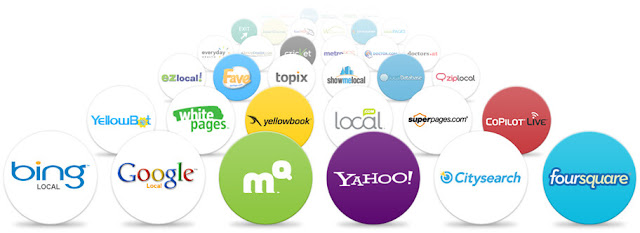
Local or business listing is a business/product description that’s more to do with branding than promoting.
Some of these websites are local, others cover the global market. Some are free, others charge money. And some are generic, others are centric on specific niches.
Google My Business listing is the most prominent name—a must for just about every business. Yelp, Yellow Pages, LinkedIn Company Directory, Angie’s List, and Manta are other renowned names.
Check HubSpot’s list of 57 online local business directories here.
7. Web 2.0 Submission
There’s a long list of Web 2.0 platforms. Some of the good ones include Blogger/BlogSpot, WordPress(dot)com, Tumblr, Weebly, Wix, HubPages, and Slashdot.

Most of these websites allow you to create free accounts and own a free sub-domain. For example, you can get YourWebsiteName(dot)WordPress(dot)com for free. Since WordPress(dot)com touts high PR, it also positively affects your sub-domain.
Now, you have a subdomain and a landing page/blog to yourself. You create content for it and then doFollow-link your original websites in them.
With content on Web 2.0, the sky is your limit.
You can create promotional content. You can promote your brand. If the articles are good, they might even get shared on social media platforms, which can bring you even higher traction.
Of course, the biggest challenge would be creating unique and high-quality content for Web 2.0 platforms; it could be quite time-consuming.
This is why many use these platforms just for backlink purposes. They create poor-quality content and just link their website.
Nonetheless.
Here’s a nice list of 60 Web 2.0 Submission Sites compiled by Roshan Jha of BloggingScoops.
Recommended Read: How to Create Content Fast (Without Hurting Its Quality)
8. Link Exchanging
You get together with other webmasters, bloggers, or website owners and then mutually agree to exchange backlinks. Also called reciprocal linking.

This is quite simple. All you’ve got to do is find someone who wants backlinks just as much as you do.
Forums and social media platforms are good places to find such people. You can also attempt email outreach.
A basic Google search can also be quite helpful.
For example, if you’re in the personal development niche, just Google “list of personal development blogs”. Here’s what you will get…
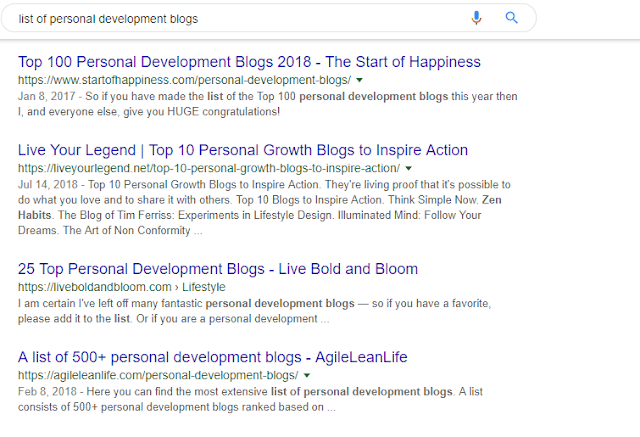
Indeed, if you’re a beginner, it’s very unlikely that top bloggers would exchange links with you.
So, do some research and find those who are on an equal level with you. And then email them about exchange links. Explain your proposition properly. A handful of them would happily agree.
PRO TIP: Do not exchange links with those websites whose Domain Authority (DA) is lower than yours.
9. Thematic Link Building
Thematic link building shares the same idea of link exchanging. But it differs in two ways:
One, you get involved with only those “relevant” blogs/websites that are in your niche.
Two, the website that’s linking you, you don’t link it back directly. Instead, you get more than one website involved in this setup to create a chain of backlinks where no websites are exchanging links with each other directly.
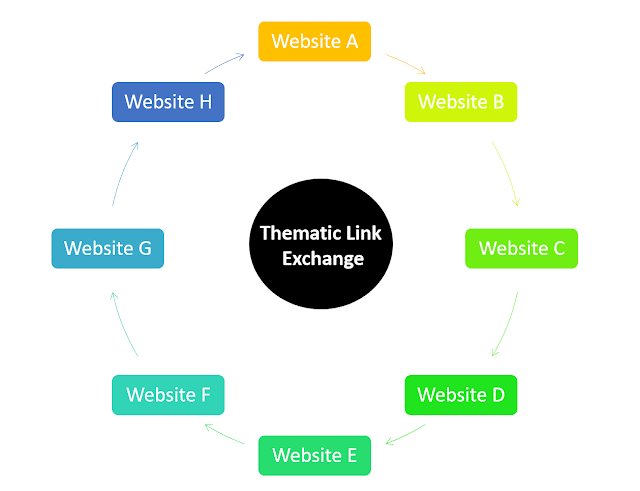
For example, A links to B, B links to C, C links to D, and D links to A. As is evident, there’s no direct exchange of links between the two.
This helps prevent raising suspicions for search engines.
I have covered this topic in detail with a case study, as well as step-by-step how you can pull it off easily. Read: The Ultimate Guide to Thematic Link Building
10. Social Media Sharing
There still exist many debates about how, and if, social media affects SEO.
Honestly, it’s a controversial topic. Different employees from Google have had different say on this over the years.
But even if social media presence doesn’t affect search ranking directly, few can deny its positive impact in raising brand awareness and value.
And, in recent times, on SERP, search engines have been prioritizing big brands much more comparatively.
Besides, if you have higher brand recognition, your result ought to get many more clicks. And when your CTR is high, it will very certainly affect your ranking positively.

So, social media sharing is definitely a very important off-page SEO technique. (And not to mention, it’s a key part of your social media marketing strategy, helping you get more fans and followers.)
Share your blog posts on big guns like Facebook, Twitter, and LinkedIn very often.
11. Content Publishing Platforms
As the name suggests, these are platforms where you publish content.
Broadly put, any website that allows you to publish content, in whatever form, can come under this category. And there exist thousands and thousands of them.
But, of course, we’re looking for publishing platforms that help in SEO through link juice and brand exposure.

Medium has emerged to be one of the foremost such platforms that promise big things. Coming from the maker of Twitter, it touts millions of monthly users, is a super-powerful editor, and has high domain authority.
Aside from publishing original articles on Medium, you can also re-publish content from your own blog using Canonical.
LinkedIn’s Pulse is another great option. It’s actually a must-be platform for B2B bloggers and business owners.
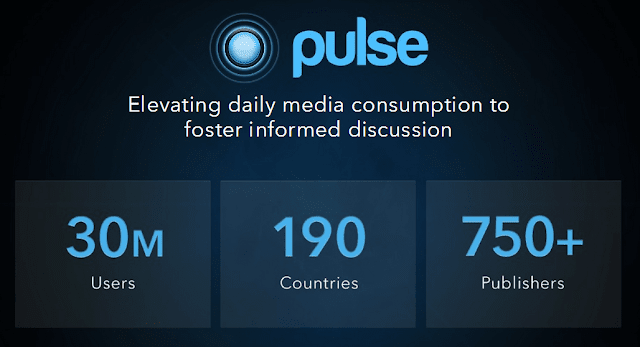
Other content publishing platforms include ScoopIt, PaperLi, Joomag, Tumblr, and Woopie. There are many more, including all the social media platforms that you know of.
On these publishing platforms, you can post content in different formats, to reach different target audiences.
12. Press Release
Press Release has lost their real meaning really.
Originally, PRs were official statements from companies for news media, meant to primarily make announcements. Journalists were supposed to use the information in their reports.

Today, a Press Release is nothing more than a promotional tool for brands to howler ‘Hey, look at us’, even when they have nothing to announce.
Almost the majority of PRs nowadays go unnoticed, getting no coverage in the mainstream media. The end-consumers, too, do not care about them.
In SEO sense, you can publish press releases on different websites.
Even if you have nothing new or newsy happening, you can just make up an announcement (no blatant lies please). And in the post, in the end, you include a backlink to your website.
How effective this measure is will depend on the kind of websites you’re distributing your PR on.
There exist many PR distribution services — some free and others paid, some with good authority and others with a poor network. These services syndicate your press release to different media outlets.
Here’s a list of the top 20 press release websites. (Heads up: This website has too many pop-ups and sticky elements.)
Before paying any PR distribution service provider, make sure it can be trusted; there are too many such mediocre websites out there.
13. Quora Marketing
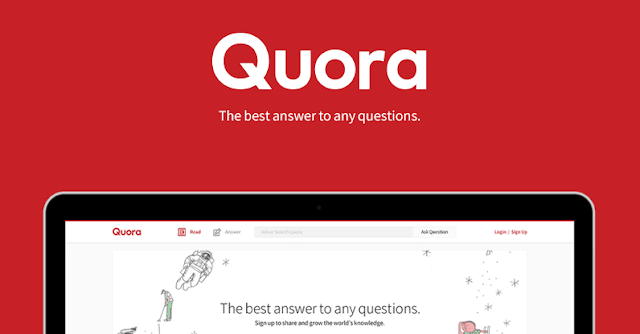
Quora has one of the most active communities of users with an incredibly high engagement rate.
You can easily amass a following, and garner brand recognition, if you’re consistently answering people’s questions with good, non-promotional intent.
It’s surprising though that at a time when being a successful blogger and driving online sales is all about engaging the audience, so few business owners use Quora.
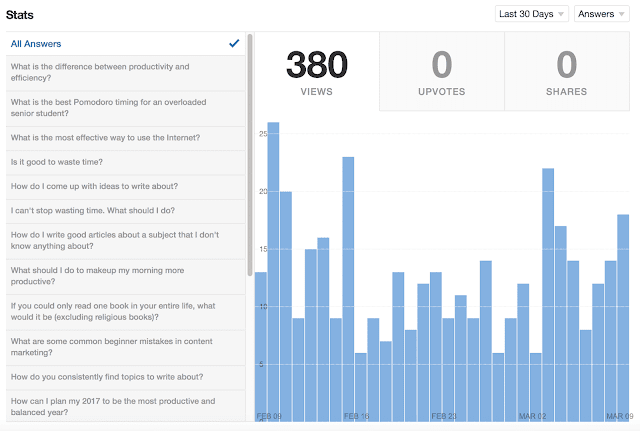
If you aren’t on this Q&A platform, get on it today.
Create and complete a profile, follow the right topics, and start answering people’s questions. Don’t shove links in every answer unnecessarily; do this only when it makes sense.
Putting backlinks in answers has been overdone by the spammers. So, the CTR is very, very low.
Focus, primarily, on building brand recognition and value. If people find your answer helpful, they are going to follow you. And when they do, converting them, in one way or another, becomes relatively easier.
In addition, Quora also offers a dedicated blogging platform. You can republish your blog posts here to drive higher engagement.
There are virtually seamless ways to make the most of Quora in terms of building a brand and driving blog traffic. All you’ve got to do is be willing to genuinely help people with unique, personalized answers. (This could be quite time-consuming though.)
14. Forum Conversations
The process is fair and simple.
You find relevant forums in your niche. Join them, be a part of the ongoing conversation, help others, and when the opportunity arrives, you direct people to your website.
You can start a new conversation as well.
Of course, again, you’ve got to be careful about not looking like a spammer. You must genuinely want to be a part of the conversation and bring value to all the participants.
There are hundreds of good, niche-based forums out there. Google [“your niche” + forum], like “recipe + forum”…
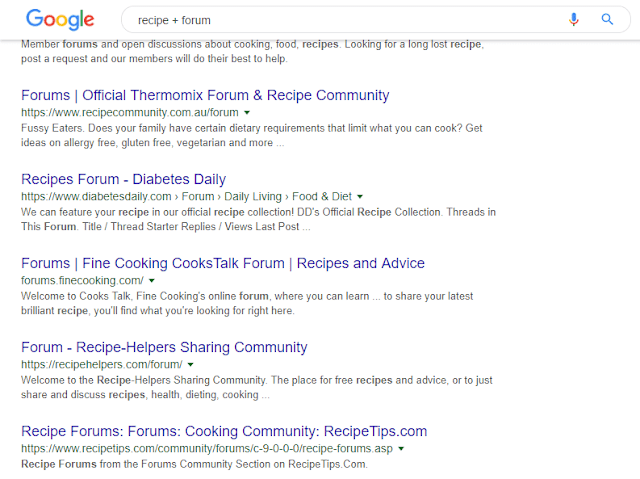
15. Blog Commenting
Another very common off-page SEO strategy. You find a relevant blog in your niche, find their most recent or popular posts, and comment there.
Many blogs allow you to include your website URL, along with the name, email, and message, when commenting.

This makes your comment name clickable.
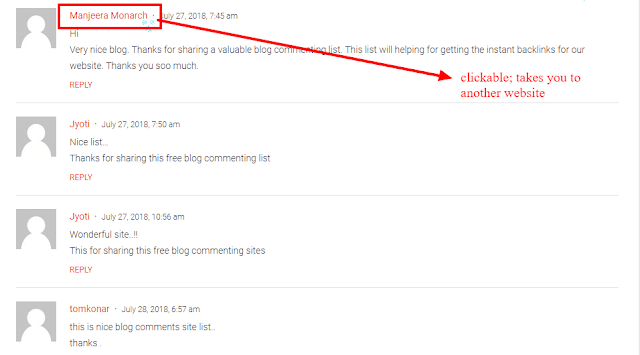
Comment on such relevant posts thoughtfully for networking purposes.
Strike conversations with the author and other commenters. And then when you spot an opportunity, post a link to your website or recommend your URL.
This is the white-hat side of blog commenting. It also has a black-hat side. And it’s simple…
You find websites/blogs where you can leave a comment with URLs — high DA websites/blogs that allow doFollow backlinks in the comment section.
Here’s a massive list of 500+ blog commenting sites compiled by iBuzzr.
16. Infographics Submission
Infographics can increase web traffic by up to 12 percent. (Click To Tweet)
Although in 2023 it’s less popular than what it once was back in 2015 and 2016, the long-form visual is still a game-changer.
In-depth, helpful, and appealing — people still love consuming infographics like this one…

(Courtesy: 99Signals)
If you don’t already, start creating Infographics wherever relevant. Canva and Venngage are two of the best infographic makers.
Aside from using it in your blog posts and posting it on social media platforms, distribute it on Infographics submission websites.
Visualy.ly is a popular submission site, followed by Infographic Reviews and Infographics Showcase.
Here’s a list of 21 infographic submission websites put together by Piktochart.
17. Influencer Marketing

As of late, influencer marketing is the buzzword on the street. And if the market pundits are to be believed, even 2023 will be all about influencers.
Again, this is quite simple (but not easy). And there are many ways to do it.
You find a few influencers in your niche — someone who has a good social media following (and engagement), someone who enjoys good traffic to her/his blog.
You contact them and communicate about promoting your brand or product on their channels to their audience.
Negotiating a term would be the biggest challenge. The big the influencers, the bigger they will demand.
Also, how you want them to promote your product – the creative dimension – it must also be decided carefully and collectively.
For instance, do you want them to review your product on their blog, do you want them to namedrop you on their social channels?
All in all, if done correctly, outreaching influencers can not only increase blog traffic significantly but also add to your brand value and improve conversion.
18. Podcasting

44 percent of the US population has listened to a podcast. 73 million of them listen to podcasts at least once every month.
These numbers alone speak volumes of why you should be producing audio-form content.
You can start a dedicated series and have regular episodes. Or, if that’s too much, you can simply convert your texts (or videos) into audio.
Given the popularity of audio-based content is surging to newer heights by the passing day, with high-quality content, you can easily amass a following and build a good brand reputation.
There are many podcast-hosting companies out there. Almost all of them come at a price. Blubrry, Audioboom, Libsyn, Podbean, and Anchor are some of the foremost names.
Here’s a list of the 27 best podcast-hosting sites.
And then when it comes to best podcast directories, iTunes, Spotify, and Google Play Music rules.
19. Reddit Marketing

Reddit is Quora on steroids in terms of engagement. It is one of the most engaging platforms with tight-knitted communities.
There’s a subreddit for virtually every possible topic/niche in the world.
Find relevant subreddits and then start being a part of the conversations.
Again, the primary goal is to offer value to all the participants; because, unlike other platforms, the rules of Reddit are much more stringent. So, you’ve got to play carefully.
Answer people’s questions. Strive to help them. And when it makes sense, only then post links to your website.
Generally, these links are ‘noFollow’. However, once your post has enough upvotes, the backlinks get turned into ‘doFollow’. It is perhaps one of the best things about Reddit.
So, you’ve got to be extremely smart when posting links.
20. Photo Sharing

Sure, when it comes to photo sharing, Instagram and Facebook take away all the attention.
But beyond these biggies, there is a handful of good and dedicated photo-sharing websites for SEO purposes that can drive you big traffic.
Pinterest is possibly the best – and my favorite – platform out there.
While it’s ideal for all, thanks to a large community of hardcore users, there are certain niches/categories that are best fit for Pinterest. It includes DIY & craft, home décor, quotes, gardening, animals, tattoos, photography, and hair & beauty.
Aside from Pinterest, you’ve got Flickr, Imgur, and Photobucket.
Content from each of these photo-sharing websites shows up regularly on search engines’ result pages.
21. Document Sharing

A few weeks back, I wrote a complete SEO checklist PDF (it includes a downloadable PDF). In just 3 days, there were over 170 downloads.
The point is people like reading traditional-style documents. They want to download PDFs, DOCs, and PPTs that they can consume offline later.
Sure, you can create dedicated documents with unique content; particularly, it can help you with branding. But that would be too time-consuming. And given search spiders can’t crawl the documents, it wouldn’t be wise either.
In simple, you can turn your long-form, pillar contents into PDFs or PPTs and distribute them on different channels.
There exist many high-authority document-sharing websites that can help your website gain significant traction.
Slideshare is the most popular one. Other options include Scribd, Google Docs, and Issuu.
22. Widget/Plugin Development
Well, this isn’t easy. And it’s also not possible unless you’re a developer yourself OR can afford to outsource developers.
Also, it’s not really fitting for every kind of niche.
The deal is simple. You create something that other people use on their websites. This “something” would include a branded backlink to your website.
Widgets/plugins are the most obvious choice.
Something like this…
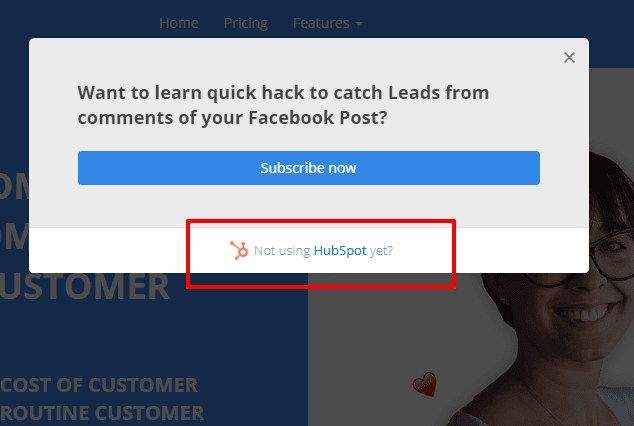
Or this…
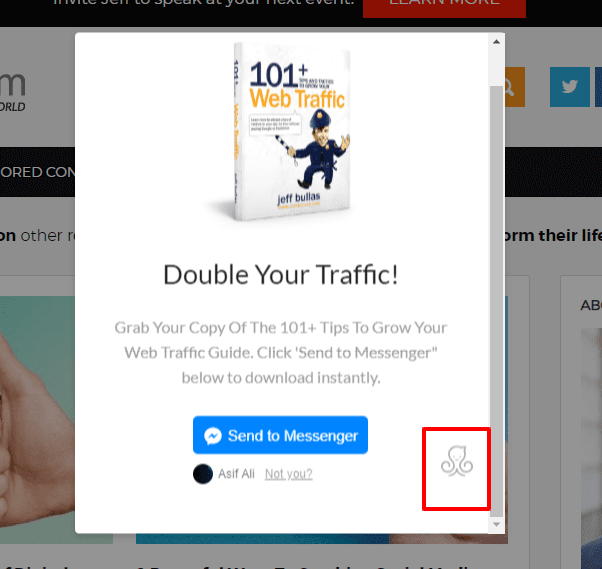
Or this one…

You can also create some kind of form, calculator, or quiz, like this

Or this…

Again, this would require a hefty investment in time and money.
But if you can get this right, not only can you enjoy hundreds of backlinks but also a lot of money by turning your “something” into a freemium or paid solution.
23. Business Reviews and Ratings

Good reviews and ratings have benefits in the manifold.
One, displaying reviews can increase conversion rates by 270 percent. So, you can drive higher conversion/sales rather easily. (Isn’t that your end goal?)
Two, having good reviews and ratings on Google help in local SEO significantly. So, if you own a brick-mortar business, this could be a game-changer.
Third, there are countless online review websites, catering to a wide range of niches. Getting backlinks from such portals can very certainly help your case.
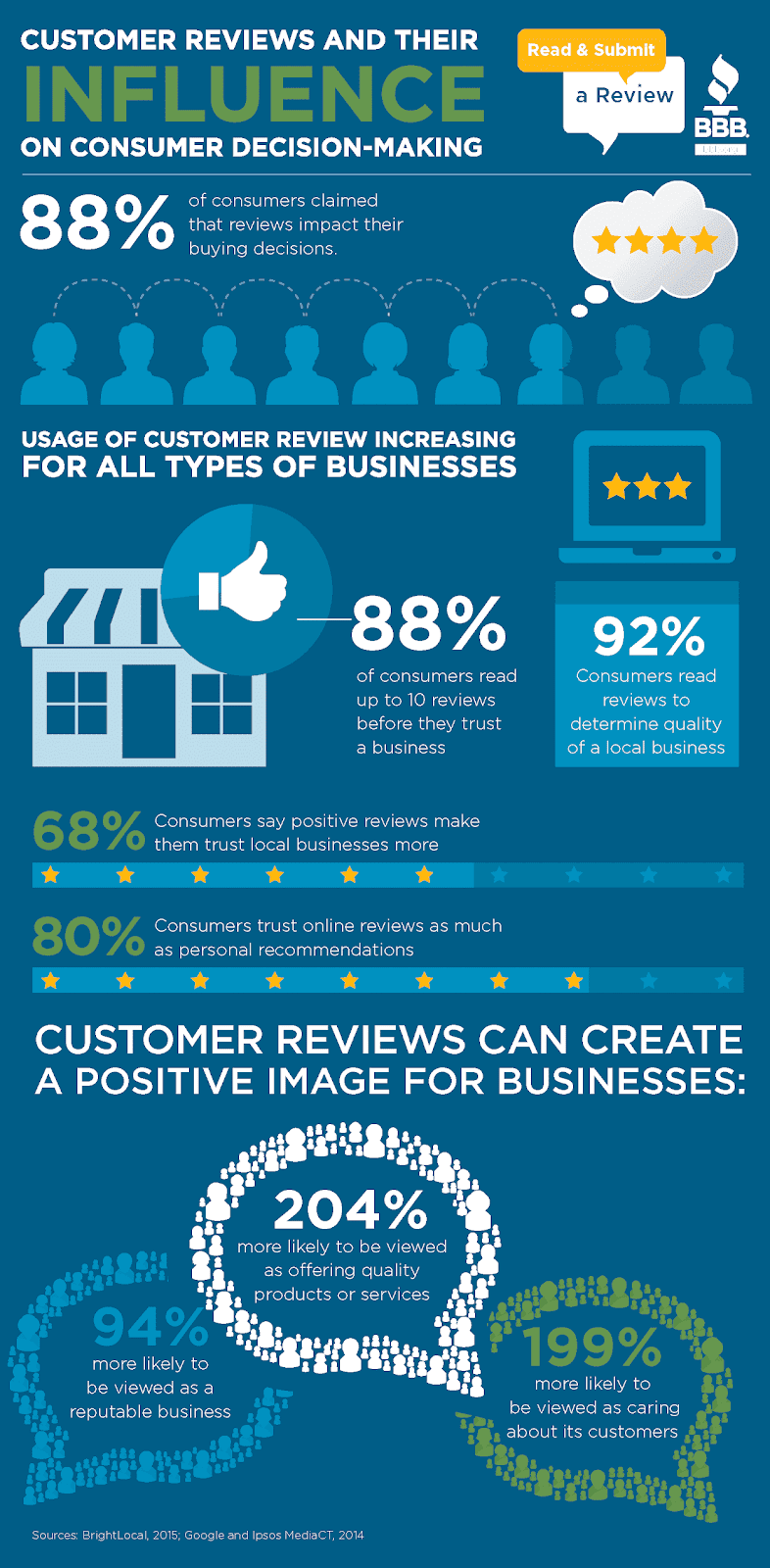
(Infographic Courtesy: Better Business Bureau)
Here’s a list of 55 business review sites by Review Trackers.
Now, of course, throughout the engagement process, you must convince your audience and customers to leave you good ratings and reviews on selected platforms. But you can also do what many SEO agencies do firsthand…
Publish fake reviews. It’s fairly simple!
Create fake profiles on respective platforms, and then leave good reviews for your brand/product. Unethical, sure! But it’s used by even big brands and influencers.
24. Search Engine Submission
This is quite a common step — but you would be surprised how many people don’t do this.
Yes, search engines will eventually crawl and index your webpages. But if you can push them the link that needs to be crawled and indexed, it can speed up the process.
After you have published a new post – or tweaked anything on the existing pages/posts – submit the URL(s) to Google and Bing.
Both search engines allow this through their webmaster tools: Google Search Console and Bing Webmaster.

In addition, there are search engine submission services like Entire Web that submit your URLs to many search engines in just one go, quickly and conveniently. (Personally, I am not sure how effective they are!)
25. Video Marketing

2020 will be all about videos. And 2020 might just be the year when videos take over the text-based content across the web.
Videos have already surpassed blogging by 3 percent in usage as a social media marketing asset. (Click To Tweet)
And if that’s not all, Cisco projects that global internet traffic from videos will make up a whopping 82 percent of all consumer internet traffic by 2021. (Source)
Higher engagement, higher shareability — videos are assets that you must invest in intensively.
Record your own self. Create whiteboard videos. Choose any other form or format that you’re comfortable with.
Once you have created kick-ass video content, distribute it across different social channels.
Aside from the obvious ones like YouTube, Facebook, Twitter, and Instagram, there are tons of other channels where you should publish your video.
Vimeo Metacafe, DailyMotion, Twitch, and TikTok – these video-centric platforms tout millions of monthly users.
Spread your video anywhere and everywhere, whenever it makes sense, for maximum results.
26. Article Submission

There are virtually hundreds of article submission sites. And some of them are legitimately good with good DA. Like HubPages, Wattpad, Live Journal, Dzone, Ezine Articles, and The Free Library.
Here’s a list of top article submission sites by ‘Expert Training Institute’.
The process is simple. You make accounts on these websites, create profiles and then publish articles with backlinks to your website.
Now note, many people do re-publish the posts from their websites on these platforms. Don’t do that. Don’t copy and paste your posts on these submission sites.
Although Google doesn’t penalize for duplicate content, this practice does cast a negative PR for your original URL – more so, if your domain authority is low.
Instead, publish original content.
Of course, don’t spend too much time creating such “original” content; don’t write long and intensive articles. The basic 400-word article is good.
Have your keywords as anchor text. Include at least three relevant images. That’s it!
Remember, backlink/SEO is your primary focus here, and not necessarily content marketing.
27. Name-Dropping

There’s a reason why Expert Roundup posts remain so popular in the blogging niche even to this day.
Expert Roundup is a collection of quotes, interviews, tips, and advice of influential, authoritative and “expert” individuals in your niche.
When you include names of other bloggers and influencers in your post – and if you inform them about this – there’s a decent chance they might share your post with their social media followers, and even backlink you on their own blog as a return favor.
Now, you don’t necessarily have to create classic roundup posts per se. (Besides, their trust appeal has declined since 2016-high.)
Just write a regular blog post. And include some names and backlinks in it of other bloggers, authors, social media influencers, and experts. Meaning, namedrop!
After publishing the post, inform these people, that you have mentioned them, through social media or emails. And then just wait and hope that they return the favor.
TIP: Don’t go for the biggest name in your niche—unless, of course, you’re just as big. There’s a very less chance they would care about their mention in your post.
28. Give Interviews
You don’t need celebrity status to give interviews.

There are many bloggers – for the sake of networking, to create more content, and to help their audience – who take interviews even of those who aren’t necessarily very established.
So, if you already have good traffic, social following, and Alexa ranking, you wouldn’t have problems scoring interviews.
But even if not, you can still outreach the smaller bloggers in your niche (who already take interviews), tell them your story, make a strong proposition, and set a deal.
This “deal” could be anything… You pay them, promising to promote their brand on your social media. Or, feature them in one of your blog posts in any capacity.
If you’ve got a fascinating story and even decent following, many small bloggers would love to feature you in one of their written interviews.
29. Email Outreaching

This is a fairly common thing, and a must in many ways.
When you’re in a growth phase, in particular, you must regularly outreach other people and companies in your niche for various purposes.
Send emails asking for backlinks, informing them about your posts/products/services, taking interviews, complimenting them for something they have done, and so forth.
Email outreach is essential at the initial stage for bloggers, influencers, and companies – in particular for those who cannot afford to spend big on paid advertisements.
So, connect to relevant people on a consistent basis. Ask for favors (within a limit though) – and at the same time, strive to help them, in any way, as well. There are no free favors after all!
Also, again, don’t outreach the top names in your niche. It’s very unlikely they will respond unless you have a phenomenal offer.
Recommended Read: Ultimate Email Marketing Guide (Beginners + Advanced)
30. The Broken Link Building Strategy
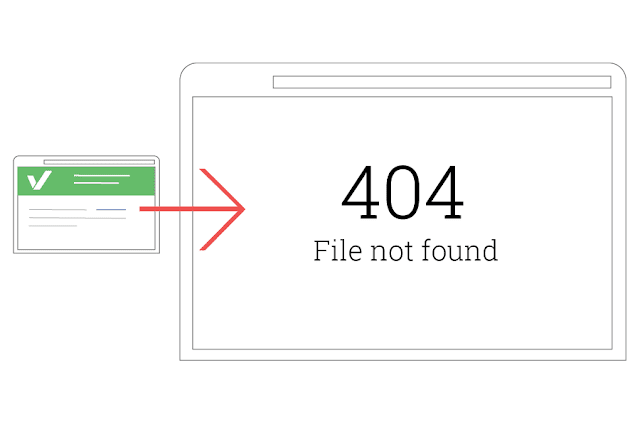
Quite a simple tactic—but not necessarily easy to pull given just how mainstream it has become.
It’s all about being a good online Samaritan and hoping for a favor in return.
The process is simple. You find websites or articles that have linked to other webpages in your niche. Then find out which of these links are broken.
Following, you email that website owner and inform her/him about this broken link. And in the same email, you provide her/him your own (relevant) link as a replacement.
If the quality of your content in the replacement link is good, the website owner would be happy to provide you with a backlink. Voila!
Traditionally, broken link-building strategy has always been over-hyped. However, today, its conversion rate is rather low. So, you’ve got to do it on a mass level.
Here’s a good guide on broken link building by QuickSprout.
31. Hold Contests and Giveaways
Recently, SEMrush held a contest for bloggers, marketers, and companies in India. Choose a topic from their list, publish a high-quality article on your blog, promote it like crazy on social media, and win a MacBook Pro and other goodies.
These were the requirements of that contest:
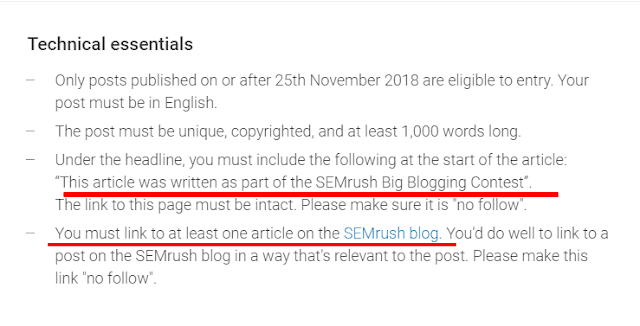
Even if 100 individuals participated in the contest – given one can publish more than one post – imagine the number of backlinks and social traction SEMrush received out of it.
You can employ a similar strategy.
Of course, you don’t have to offer a MacBook. You can settle for something less expensive – like customized t-shirts, a trip to a good destination, your premium product for free, and passes for any event.
The prize options are seamless.
If holding contests sound like too much work, then casual giveaways are a decent choice too.
Ask people to share your articles, subscribe to your blog, or provide you with a backlink. And then randomly select a few names and give them something (cheaper) for free.
Printsome has a nice article covering 100 creative giveaway ideas. You will easily find one that best fits your niche and budget.
32. Buying backlinks

Very easy. But costly.
You can buy backlinks from relevant and high-authority websites rather easily. And guess what, even top names (secretly) use this strategy.
Go to freelancing platforms like Upwork and Freelancer.
Post your requirement that you’re looking for backlinks from top websites like Forbes, Entrepreneur, and Huffington Post. You would be surprised how many bids you would get.
In addition, you can also visit Fiverr and search “backlinks”. You will find hundreds of people offering to build you backlinks from different good, average, and poor websites for as low as $5.

Conclusion
Sure, on the micro-level, there are plenty of other off-page SEO activities. Like talking individually about every platform.
But generally put, these are the 32 most popular off-page SEO techniques in 2023.
Again, a lot of them are black-hat. And some of them are purportedly outdated – although they are still employed widely by bloggers, “experts” and SEO agencies.
So, if you’re planning to implement them, plan properly. Don’t rush. Have a systematic approach.
For instance, if you post your link in tens of submission websites or directories within minutes, it might raise a red flag for the search engines.
Also, remember that not all of these search engine optimization strategies will fit your need and niche. So, you’ve got to pick ones that serve your purpose optimally.
So, now you know, go ahead, and champion off-page SEO with these techniques.
Recommended Read: SEO Writing: A Comprehensive Guide to Create Content That Google Rewards
If you found this post helpful, please share it on your preferred social media. 🙂

